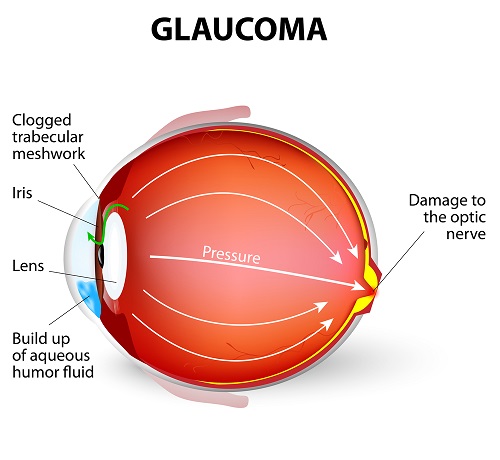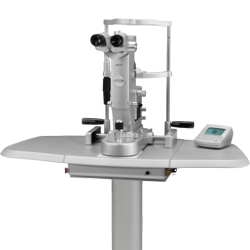Glaucoma
 What is Glaucoma?
What is Glaucoma?
Glaucoma is a disease that causes damage to the optic nerve, which results in permanent vision loss. Glaucoma occurs when the pressure inside of your eye (called intraocular pressure) becomes too high. This increase in pressure is generally due to a build-up of fluid inside of the eye. The increase in pressure causes the eye to press against the optic nerve, resulting in severe and permanent damage.
The exact cause of glaucoma is unknown, but there are many potential risk factors.
Who Is at Risk For Glaucoma?
Glaucoma can happen to anyone. However, some people are more susceptible to than others. Some known risk factors for developing glaucoma include:
- Being over the age of 40
- Having a family history of glaucoma
- Being of African or Hispanic heritage
- Being nearsighted or farsighted
- Having had a previous eye injury
Having diabetes, migraines, poor blood circulation or other general health issues
People with these risk factors should be examined yearly to ensure that if glaucoma develops, it is caught early on.
Symptoms
Glaucoma is infamous for showing no symptoms until permanent vision loss has already occurred. This is why frequent eye examinations are important. When caught early on, glaucoma patients have a much higher chance of keeping their vision intact.

In rare cases, people with the more severe form of glaucoma will exhibit symptoms such as:
- Severe eye pain
- Nausea and vomiting
- Headache
- Blurry vision
- Profuse tearing
If you experience these symptoms, you should seek medical attention immediately.
Glaucoma Treatments

Depending on the type and severity of your glaucoma, there are many different treatments available. No treatments can reverse the damage caused by glaucoma, but they can stop further damage from occurring.
- Medications. Both oral medications and medicated eye drops have been used to lower intraocular pressure. These medications are generally aimed at lowering fluid production in the eye and increasing the outflow of fluid.
- Surgery. There are several different types of glaucoma surgeries available.
- Laser Therapy. Laser trabeculoplasty uses a laser beam to open the clogged channels in the eye. This should increase the outflow of fluid from the eye, resulting in lower intraocular pressure.
- Filtering Surgery. During this surgery, your surgeon will create a tiny opening in the white of the eye (sclera) to allow proper fluid drainage.
- Drainage Tubes. During this procedure, your surgeon will place a small drainage tube in the eye.
- Electrocautery. This minimally invasive procedure removes tissue from the eye using a small device called a Trabecutome.
If you have been diagnosed with glaucoma, or if you are due for a yearly eye examination, be sure to contact an Ellis Eye location in San Francisco, San Jose, Walnut Creek, El Cerrito, Roseville, Gilroy and Corte Madera, today!

